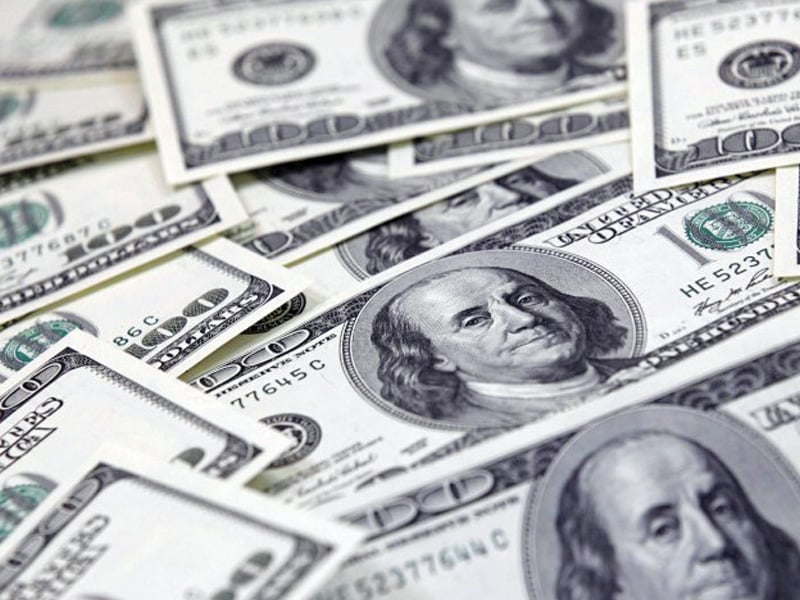
Running a budget within constrained resources has been unacceptable to financial managers since 1980. Potential for development is ‘realised’ only through foreign aid.

Ironically, at the same time, majority agree that aid has burdened the economy. Increased dependency, a depreciating rupee and unwanted conditionality is all neatly folded in the aid package every year.
Since exports are not significant, the only major source of foreign exchange earnings is through remittances.
The terms through which Pakistan receives aid on existing debts – currently the country spends $3 billion on debt servicing annually – have changed, which is likely to lead to a more constrained environment and dependency.
If we deem remittances as ‘the new solution’ to counter dependency and boost the economy, there is a need to explore the effectiveness of aid verses remittances in achieving development.
Overseas Pakistanis remitted an amount of $13.92026 billion during the last fiscal year (July 2012 – June 2013). During 2011-2012, remittances stood at $13.186 billion against $11.20 billion in the preceding year. These flows are expected to rise 8% in 2013 and 10% in 2014.
Remittances are private transfers, which are not expected to be paid back. No institution, organisation or even state can determine how these funds are to be transferred, and more importantly, how these funds should be utilised.
The consequences of remittances can be evaluated at different levels. Research shows that remittances are predominantly used to meet daily expenses. However, funds are also spent on building or improving housing, buying land, cattle or durable consumer goods, repayment of loans for migration and to fund pilgrimages to Hajj.
While the major aid chunk received from the United States via the Kerry Luger Bill ($179.5 million) in 2010 was spent on BISP ($75 million), another $64.5 million was allotted to education with the remaining for flood relief. Both remittances and aid were spent on social development.
Which one is more effective remains a question. Khyber-Pakhtunkhwa, for instance, has the highest share in total remittances. At the same time, it has the largest number of active, NGO-driven projects on poverty alleviation and social development.
Remittances are used mostly for family consumption, while foreign aid used for public service delivery — both having the same target via different channels.
Other income sources may fluctuate with the economic cycle but remittance income is relatively stable and allows the household to absorb shocks — but at times of a global financial crisis or political turmoil surges, migrant population have to come back.
Even if migrants never return home, developing countries lose human capital. It is forecasted that remittances will decline due to the diminished willingness of immigrants to send money back as they may establish their own families abroad.
As far as foreign aid is concerned, it is often alleged that inefficiency and corruption prove to be a hindrance. However, over time, the conventional donor-recipient model has changed, as new projects make development efforts more sustainable, work in partnership with local institutions and communities, and encourage the poor to become active partners in the development process.
While remittances, in a way, compliment development, it is unable replace aid.
The writer is a research associate at the Pakistan Institute of Labour Education and Research (PILER)
Published in The Express Tribune, December 2nd, 2013.
Like Business on Facebook, follow @TribuneBiz on Twitter to stay informed and join in the conversation.
COMMENTS (15)
Comments are moderated and generally will be posted if they are on-topic and not abusive.
For more information, please see our Comments FAQ

















@SHB: A loan with concessional terms compared to what is available in market is also called aid. The concession maybe in terms of interest rate or period of repayment or both.
Pakistan's exports are more than remittances by at least $10bn. God bless Pakistan Institute of Labour Education and Research (PILER)!
@ Jamshed Bitcoin is a history now... Can you suggest next big thing?
It is sad to see that a research associate is using the word Aid in appropriately . This aid is actually LOAN which has to be paid back. The real aid will be GRANT which does not need to be paid back.. I think the media should also be careful and must use the word loan when foreign govt is giving loan and not a grant.
I could agree with the substance of the article except for the word of AID.
"Since exports are not significant, the only major source of foreign exchange earnings is through remittances."
Exports are more than remittances so how can you call them insignificant? Also remittances is a catch all term in Pakistan. Even money earned for work done in Pakistan for foreign companies is called remittances by the banking system.
Buy Bitcoins as much as u can... Its value will touch 10000$ .. sell evry thing what so ever u have and buy bitcoin, sell gold , car home anything to buy them!! http://video.cnbc.com/gallery/?video=3000221840 https://www.mtgox.com/
How divisible are bitcoins? https://en.bitcoin.it/wiki/FAQ